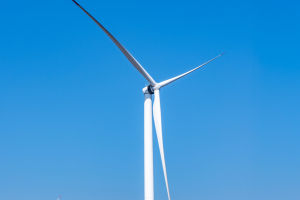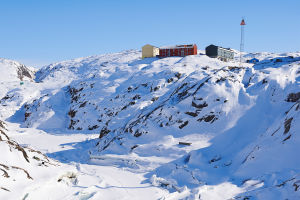You've probably felt the ground shake at some point—whether it was a minor tremor or something much stronger. Earthquakes are a natural occurrence, but what causes them? The answer lies deep beneath our feet, in the movements of Earth's tectonic plates.
These movements create faults, which, when shifted, can lead to massive earthquakes. Let's break down the connection between faults and earthquakes and how the Earth's internal forces work to shape the world we live in.
What Are Faults?
At its core, a fault is simply a fracture or break in Earth's crust. These cracks happen because of the immense pressure generated by the movement of tectonic plates. Over millions of years, the Earth's surface is constantly shifting as these plates slide past each other, collide, or pull apart. When the pressure builds up along a fault line, the rocks on either side of the fault move. If the pressure is released suddenly, it can cause an earthquake.
Example: The San Andreas Fault in California is one of the most famous fault lines in the world. It's responsible for numerous small and large earthquakes in the region. This fault is a transform fault, where two tectonic plates slide past each other horizontally, creating a build-up of stress along the boundary.
Faults come in many shapes and sizes, from tiny cracks to enormous rifts that stretch across hundreds of miles. They can form anywhere on Earth's surface, but they are most common near the edges of tectonic plates. Some faults are more active than others, meaning they produce earthquakes more frequently.
How Faults Lead to Earthquakes?
When stress builds up along a fault line, the Earth's crust is temporarily held together by friction. However, when the pressure becomes too great for the friction to hold, the fault line suddenly slips, releasing energy in the form of seismic waves. This release of energy is what we feel as an earthquake.
Example: The 2011 earthquake in Japan was caused by the sudden slip of the fault line between the Pacific and North American plates. The shockwaves from the earthquake caused widespread damage and even triggered a devastating tsunami.
The size of the earthquake depends on how much movement occurs along the fault, and the amount of energy released. In fact, the larger the fault line, the bigger the potential for a massive earthquake. While smaller earthquakes, often called “foreshocks,” can occur before a large one, they are not always reliable indicators of a larger quake to come.
Types of Faults and Their Movements
There are three main types of faults, each with its own characteristic movement. Understanding these can help predict the types of earthquakes that might occur in certain regions.
1. Normal Faults: These occur when the crust is stretched, causing one block of rock to drop down relative to the other. Normal faults are common in areas where the Earth's crust is being pulled apart.
Example: The East African Rift is a large normal fault where the African continent is slowly splitting into two parts. As the two blocks move apart, earthquakes and volcanic activity occur.
2. Reverse Faults: These happen when the crust is compressed, forcing one block of rock to move up over the other. Reverse faults are typically found in areas where tectonic plates are colliding.
Example: The Himalayas are still growing today due to reverse faults caused by the collision of the South Asian and Eurasian plates. This intense pressure causes earthquakes, especially along the plate boundaries.
3. Strike-slip Faults: In these faults, the two blocks of rock slide past each other horizontally. Strike-slip faults are found in regions where plates are sliding laterally past each other.
Example: The San Andreas Fault in California is a classic example of a strike-slip fault, where the Pacific and North American plates grind against each other.
Measuring Earthquakes and Predicting Risk
Earthquakes are measured using the Richter scale, which quantifies the amount of seismic energy released. A higher number on the Richter scale indicates a more powerful earthquake. For instance, a magnitude 3.0 earthquake is relatively mild, while a magnitude 7.0 or greater earthquake can cause widespread destruction.
While scientists can't predict exactly when an earthquake will occur, they can assess the risk based on fault activity and historical data. Areas near active faults, like the Pacific Ring of Fire, are more likely to experience earthquakes. Building codes and early warning systems are often put in place to minimize damage and protect people in earthquake-prone areas.
Example: In Japan, an early warning system uses seismic sensors to detect the first seismic waves of an earthquake, giving people valuable seconds to take cover before the shockwaves arrive.
The Continuous Motion of the Earth
Earthquakes may seem like isolated events, but they're part of an ongoing, natural process that shapes our planet. The Earth's surface is always moving, and as tectonic plates continue to shift and interact, faults will remain active. Earthquakes are the Earth's way of releasing the pressure that builds up over time. As destructive as they can be, they are also a reminder of the dynamic, ever-changing nature of our planet.
The forces that create earthquakes also build mountains, create ocean basins, and reshape entire continents. So, next time the ground shakes, remember—it's just another way the Earth is constantly evolving.


